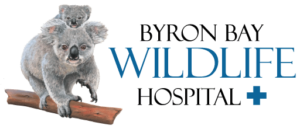‘Monty’ is a magnificent Lace monitor lizard. He was found in mid-May 2023 on the side of the road near the Northern Rivers town of Nimbin. He wasn’t moving much, but the only obvious injury was some blood in one of his eyes. He was brought to Byron Bay Wildlife Hospital by a regional RSPCA representative.
After Monty was admitted, X-rays showed that he had three fractures to his skull, explaining poor mentation and pain affecting his mobility. It is probable that he was hit by a car.
Over several days, Monty received pain relief, fluid therapy and warmth. Dr Chantal Whitten and Dr Bree Talbot examined him for improvement in neurological signs and general demeanour.
The expert care brought incremental improvements in Monty’s strength and mobility. Initially, his front feet were not placing properly, symptomatic of spinal cord compression. With treatment and stimulation, his foot placement improved. He gradually began to walk and hold his head up.
Looking after large wildlife like Monty requires expert skill and knowledge of reptile anatomy and physiology. During winter, reptiles slow down into a torpor-like state of sluggish inactivity called brumation. Given his injuries, he requires proper housing and an experienced reptile carer to oversee his recovery. With the help of the RSPCA Wildlife Hospital in Wacol, Queensland, we have found a winter home for Monty to convalesce.
He will come back to us in spring for a pre-release check-up and hopefully, a clean bill of health to be released back into the wild in his home territory of the spectacular landscapes of Nimbin.
Good luck Monty, we look forward to celebrating your release in the springtime!
Please be wildlife aware when driving, especially on regional roads that traverse natural wildlife habitats. Keeping a Byron Bay Wildlife Hospital Car Rescue Kit in your car can mean the difference between life and death for an injured or orphaned native animal.
Lace monitors are a member of the monitor lizard family native to eastern Australia. They can reach 2 metres in total length and 14 kilograms in weight.




